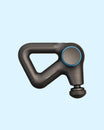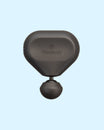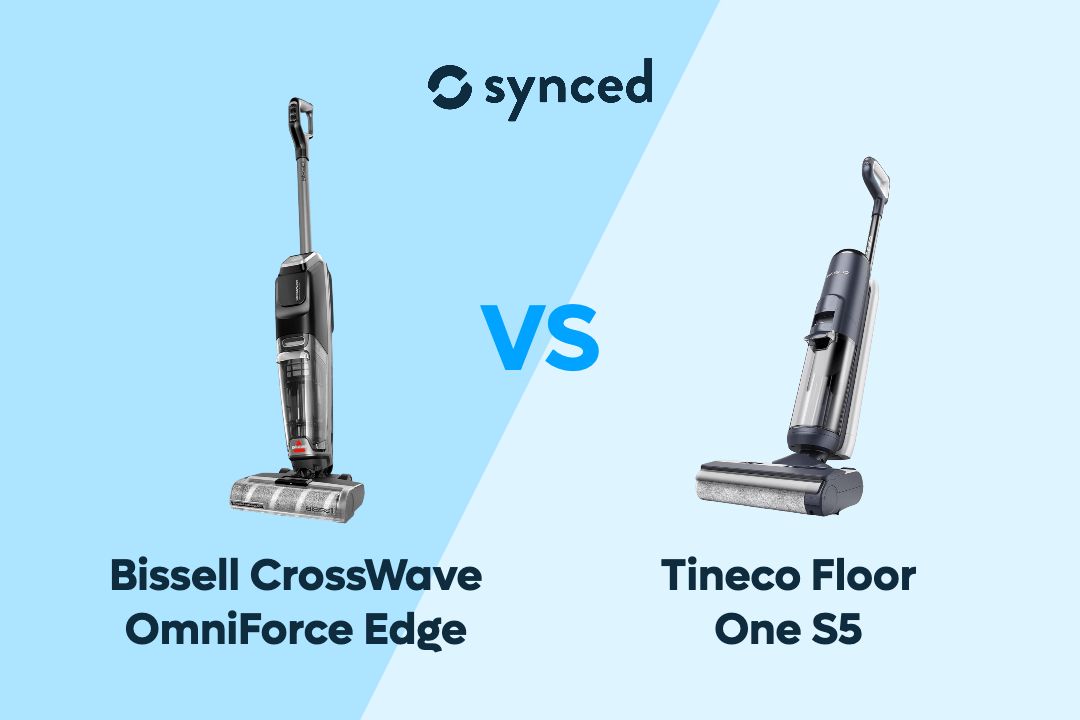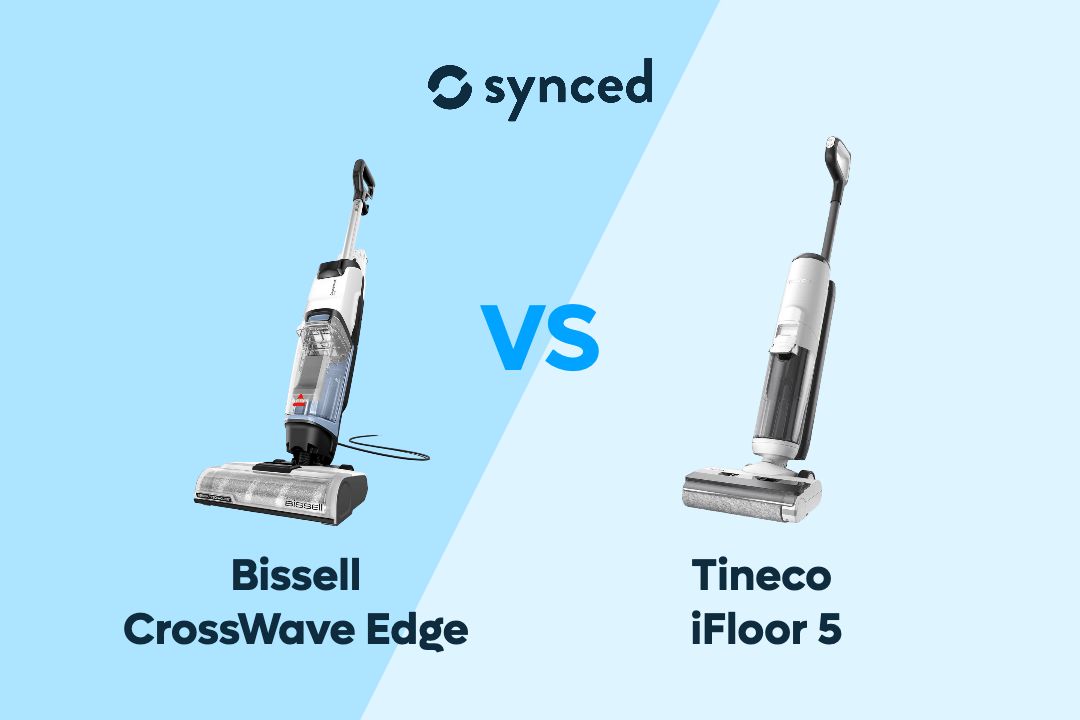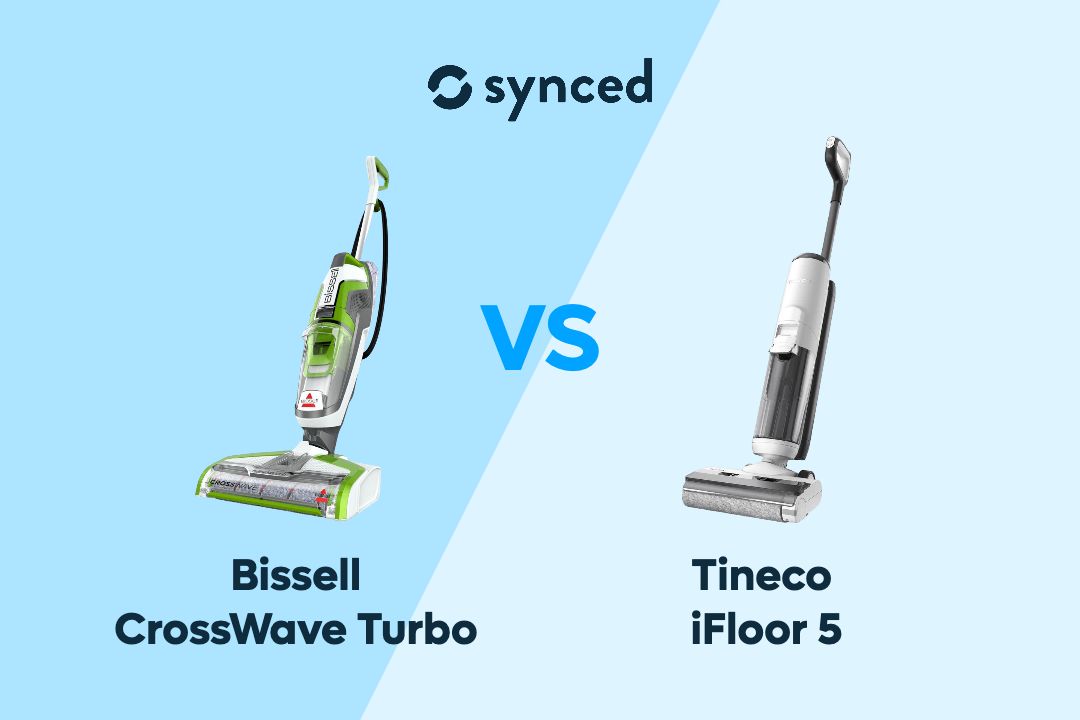Dyson V8 vs V15 Detect: 3 Things to Expect
By Naila Syifa
Updated August 2024

Dyson V15 Detect is currently the second most powerful cordless vacuum cleaner in Dyson's lineup, offering top-tier features at a premium price point. In contrast, the Dyson V8 is one of the most outdated models in the V-series lineup which is still currently on the market.
However, the fact that the Dyson V8 is still available for purchase indicates its continued popularity and value proposition. The Dyson V8 may lack some of the advanced features of the V15 Detect, but it is still a capable device at an attractive, affordable price point.
So, how does the V8 stack up against the more advanced V15 Detect? What capabilities you can expect and what features you may have to sacrifice by opting for the more affordable V8 model? Let's find out!
Key Takeaways
The Dyson V8 is lighter and more minimalistic compared to the more advanced Dyson V15 Detect. While the V15 has an LCD and two cleaner heads, the V8 only has LED lights and one cleaner head. The V15 can auto-adjust power based on floor type or detected dirt levels, while the V8 has a fixed suction power in two modes. Compared to Dyson V15, the V8 has a smaller bin capacity and a shorter runtime, making it more suitable for smaller cleaning tasks and lighter usage.


Dyson V8
Small Home Cleaning
✓ Motorbar Cleaner Head
✓ 115 AW Suction
✓ 0.54 L Bin
✓ 40 Minutes Runtime

Dyson V15 Detect
Powerful & Intelligent Cleaning
✓ Dyson Hyperdymium Motor
✓ 240 AW Suction
✓ Dust Illumination
✓ LCD with Particle Count
#1 Design

Dyson V8
Dyson V8 has an edge over the V15 with its lightweight design, weighing only 2.5 kg, which is around 20% lighter than the Dyson V15 Detect at 3.1 kg. A lighter design means easier maneuverability and less fatigue during extended cleaning sessions, but it also comes at the cost of a smaller dust bin capacity compared to the V15 Detect.
While the V15 Detect offers a 0.77 L bin capacity, the Dyson V8 has a slightly smaller 0.54 L dustbin, requiring more frequent emptying during cleaning sessions.
Both vacuum models are slim and compact, but the V8 has a bulkier top section due to the perpendicular positioning of the cyclone and the bin to the motor. Meanwhile, the V15 Detect has a more streamlined in-line configuration, placing the cyclone, bin, and motor in a straight arrangement for a more balanced design.

Dyson V15 Detect
Dyson 15 Detect also stands out with an LCD screen, which provides user-friendly access to important information like cleaning modes, runtime countdown, and maintenance alerts. Thanks to the piezo sensor which can count and size each particle that it sucks up, the V15 Detect's LCD screen can even display real-time information about the amount and size of the dust and debris being collected.
Featuring no display, the Dyson V8 is less sophisticated. The vacuum only relies on the LED lights to display battery status and a physical switch button to toggle between different cleaning modes. We know less about the cleaning performance and the debris being picked up, but such simplicity may also be appealing to some.
#2 Features

Dyson V15 Detect
As the newer and more premium model, it is not a surprise that the Dyson V15 Detect has a range of more advanced features than the V8. For example, when it comes to a cleaner head, the V8 only offers one Motorbar cleaner head while the V15 comes with two: a Digital Motorbar cleaner head and a Fluffy Optic cleaner head.
The Digital Motorbar of the V15 is similar to the V8's Motorbar in that both feature de-tangling vanes to remove hair from the brush bar, but the Digital Motorbar has an added capability. It is equipped with a Dynamic Load Sensor (DLS), which can detect different floor types (like carpets vs hard floors) and auto-adjust the suction power accordingly, when using the Auto mode.
The second cleaner head that the V15 Detect comes with, the Fluffy Optic, can generate a high-intensity beam of light that illuminates fine dust and debris on hard floors, allowing the user to spot what otherwise would be invisible to the naked eye. This makes cleaning more thorough and effective.
Another advanced feature that the V15 Detect offers is the piezo sensor, which can count and size each particle that it sucks up. This is the secret behind the V15 Detect's particle counting and size display on the LCD screen.
Not only that, the piezo sensor also allows for automatic suction power adjustments based on the detected dirt and debris. When the vacuum is detected to be picking up more dirt, the suction power is automatically increased to provide the optimal cleaning performance and will return to a lower power level when the debris is cleared to preserve battery life.

Dyson V8
This intelligent suction power adjustment can be activated by choosing the Auto mode when a powered tool like the cleaner head or hair screw tool is attached. When a non-powered tool like a crevice tool is attached, the Auto mode will be replaced by Medium mode, which provides a balance between suction power and battery life.
Besides the Auto/Medium, the other two cleaning modes available in the V15 Detect are Eco and Max, which provide lower and higher suction power levels respectively, allowing users to optimize performance and runtime based on their cleaning needs.
The cleaning modes that the V8 offers are more limited, with only two options - Powerful mode for a longer runtime, and MAX mode for maximum suction power at the expense of battery life.
In addition to the more intelligent and extensive features, the Dyson V15 Detect also boasts a more powerful suction. Its Hyperdymium motor spins at up to 125,000rpm, generating up to 240 air watts of suction power, while the Dyson V8 has a maximum suction power of 115 air watts provided by its Dyson Digital Motor V8.
Dyson V15 Detect comes with 14 cyclones, a little fewer than Dyson V8 with 15 cyclones. However, more cyclones don't necessarily translate to stronger force, as the 14 cyclones of the V15 Detect can generate much stronger 100,000g centrifugal forces to trap fine dust and allergens more effectively compared to the 47,000g forces generated by the 15 cyclones in the Dyson V8.
#3 Battery

Dyson V15 Detect
The seven-cell battery and improved power efficiency of the Dyson V15 Detect allow it to deliver up to 60 minutes of runtime in Eco mode, compared to the Dyson V8's maximum runtime of 40 minutes in Powerful mode.
Dyson V15 Detect also has a faster charging time, taking approximately 4.5 hours to fully recharge, while the Dyson V8 requires 5 hours of charging time.
In addition, the Dyson V15 Detect have a click-in battery, allowing for easy removal and swapping. When the battery runs out, users can easily swap in a spare battery to continue cleaning without interruption, while the depleted battery can be charged separately from the vacuum. Meanwhile, the Dyson V8 has a built-in battery that cannot be easily removed or swapped.
Dyson V8 vs Dyson V15 Detect
Final Thoughts

Dyson V15 Detect
The Dyson V8 may lack some of the cutting-edge features found in the V15 Detect, but it still offers impressive performance and value for the price.
While the V15 Detect boasts more suction power, advanced dirt detection, dust illumination, a larger dustbin, and a longer runtime, the V8 delivers reliable cleaning results that are sufficient for many households, especially smaller homes. Its lightweight design, simple controls, and cordless convenience make it a practical choice for everyday cleaning needs.
For budget-conscious consumers who don't require top-of-the-line capabilities, the Dyson V8 remains a compelling option that can get the job done without breaking the bank.
If you like to read more about Dyson cordless vacuums, check out our other relevant guides here:
Dyson V8 vs V10
Dyson V8 vs V11
Dyson V8 vs V12
Dyson V10 vs V11
Dyson V11 vs V12
Dyson V12 vs V15
Don't miss out on tech
Subscribe to our newsletter to stay up to date on the latest tech trends and guides on the best gadgets around.


